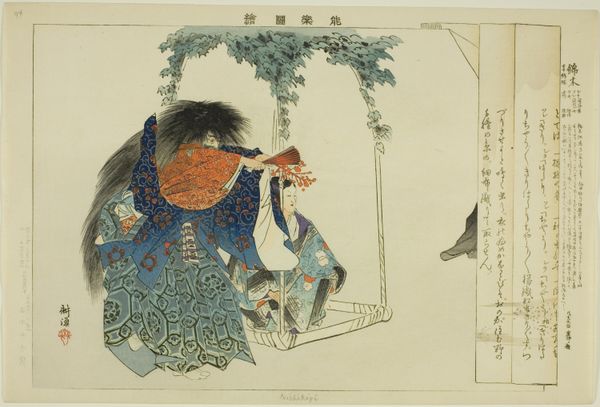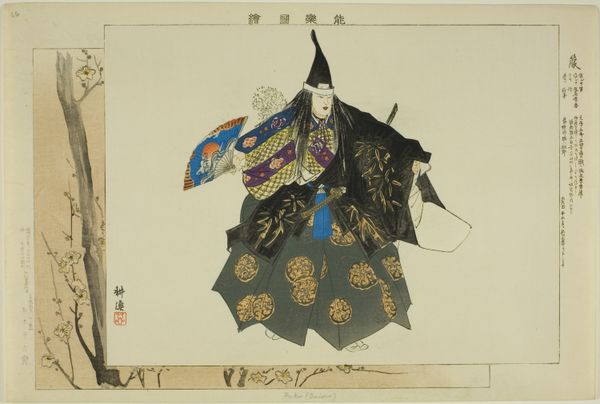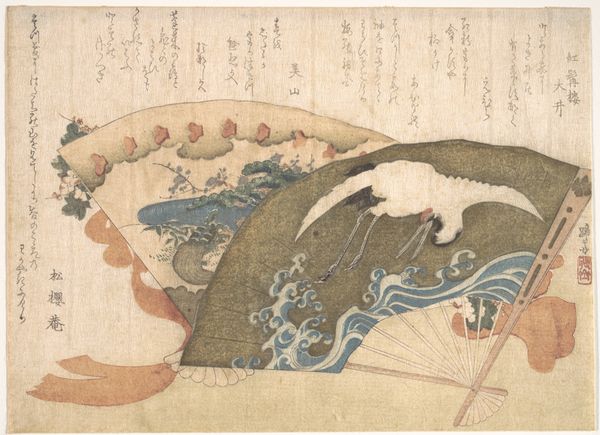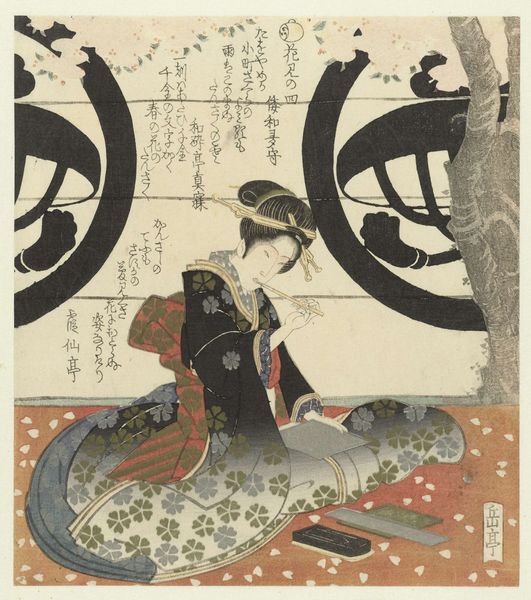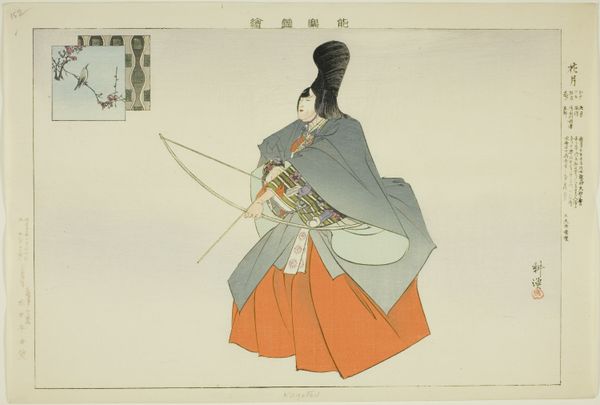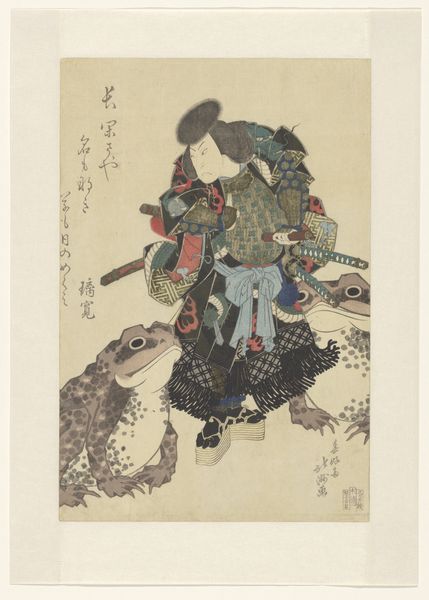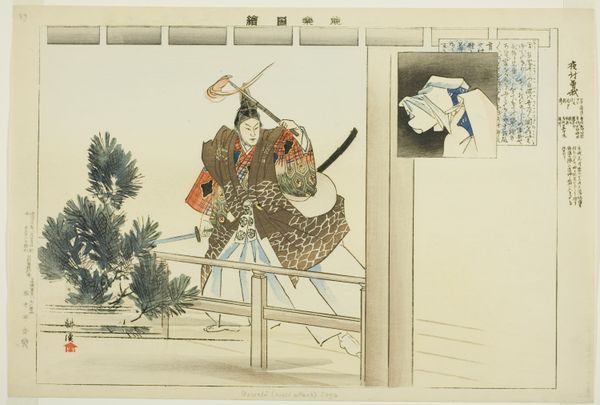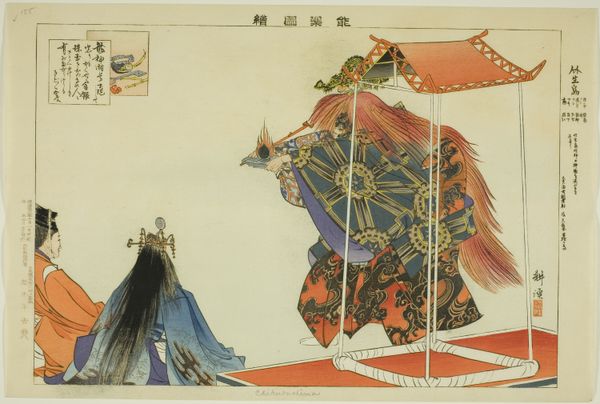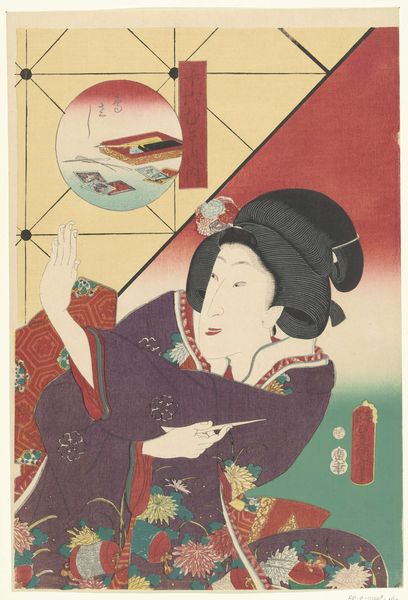
Tadanori, from the series "Pictures of No Performances (Nogaku Zue)" 1898
0:00
0:00
Dimensions: Approx. 25.2 × 37.4 cm (10 × 14 4/3 in.)
Copyright: Public Domain
Tsukioka Kôgyo created this woodblock print titled “Tadanori” as part of the series "Pictures of No Performances" in the early 20th century. The image depicts Tadanori, a tragic hero from Japanese history, dressed in the costume of a Noh theatre performance. Made during the Meiji era in Japan, this print reflects the country’s complex negotiation with modernity. The Meiji government used the Noh theatre as a symbol of Japanese cultural identity, while simultaneously promoting westernization. Kôgyo’s series, "Pictures of No Performances" emerged from this cultural and institutional context. He was commissioned to document these performances, creating a visual record of a highly stylized and symbolic art form. This print aestheticizes a moment from the play. A fleeing warrior pauses to compose a poem, embodying the ideals of honor and refinement. To understand this work more fully, we can turn to historical sources like play texts, costume designs, and performance reviews. These resources reveal the significance of Noh theatre as a site of cultural and political meaning in modern Japan.
Comments
No comments
Be the first to comment and join the conversation on the ultimate creative platform.
